What Size Air Pump For Hydroponics? Sizing Guide for Maximum Growth
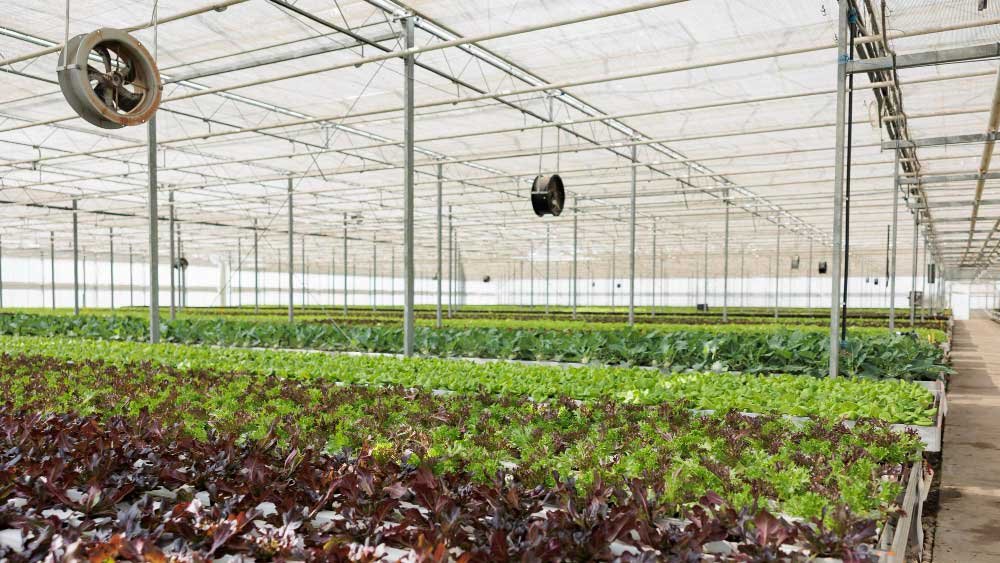
Have you ever wondered how plants in a hydroponic system get the oxygen they need to grow?
It’s all about the air pump!
In hydroponics, plants grow in water instead of soil; an air pump is crucial in keeping them healthy. Think of it like a fish tank – the pump adds oxygen to the water, which is super essential for the plant’s roots.
But here’s the tricky part: how do you know what size air pump to use? It’s not a one-size-fits-all situation.
The right air pump size depends on how big your hydroponic system is and what kind of plants you’re growing. I will share my hands-on experience here on air pumps for hydroponics.
We’ll also explore different types, their importance, and how to pick the perfect one for your green friends.
Remember that understanding air pumps is vital to a thriving garden. So, let’s get started!
What Size Air Pump For Hydroponics?
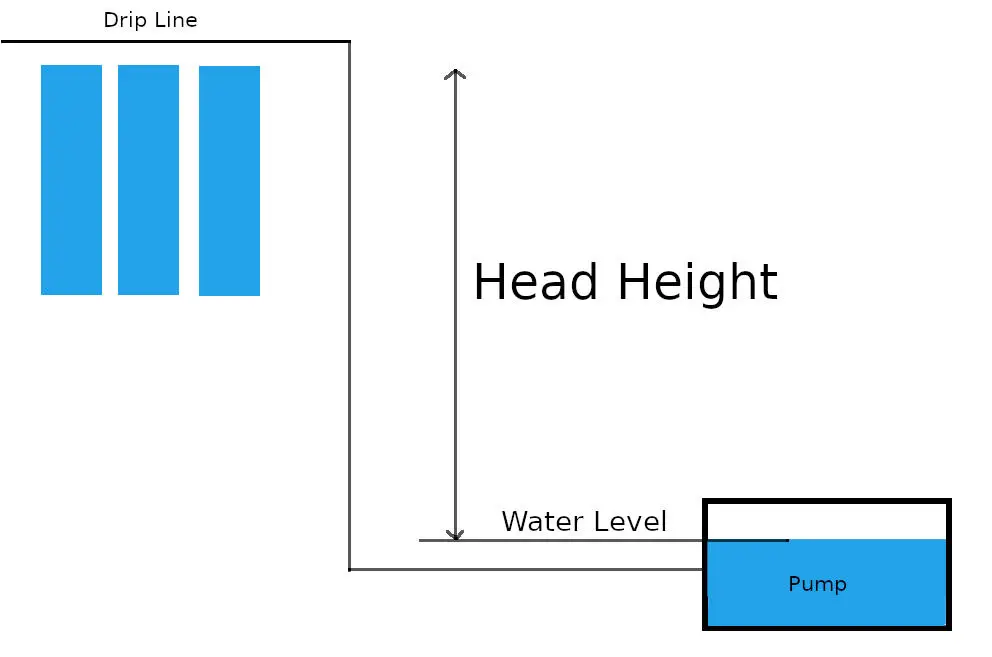
The size of the air pump you need depends on several factors, including the size of your hydroponic system, the volume of the nutrient reservoir, the number of plants, and the type of plants you are growing.
These 6 best hydroponic drip systems can make your job easy!
Here are some general guidelines to help you determine the correct size:
- Size of the Hydroponic System: The larger your hydroponic setup, the more powerful the air pump needs to be. A common rule of thumb is to aim for an air pump that can provide at least 500-600 milliliters of air per minute (ml/min) for each gallon of nutrient solution in your system.
- Number of Air Stones: If you use air stones to distribute the oxygen in the water, consider the number and size. Larger or more numerous air stones require a more powerful pump.
- Type of Hydroponic System: Different systems have different oxygen needs. For example, Deep Water Culture (DWC) systems generally require more aeration compared to other types like wick systems. It requires 1 liter of air per minute for every 4 liters of nutrient solution.
- Plant Requirements: Some plants need more oxygen than others. Leafy greens like lettuce might not require as much aeration as larger fruiting plants like tomatoes or peppers.
As a starting point, for a small home system (about 5-20 gallons), a pump rated for 2-4 liters per minute (L/min) is usually sufficient. You might need a pump with a capacity of 10 L/min or more for larger systems.
How Do You Size A Hydroponic Air Pump?
To size a hydroponic pump, you need to consider the size of your system, the type of hydroponic system, the height of the system above the reservoir, and the water demand of your plants. Here’s a step-by-step guide to sizing a hydroponic pump:
Determine the type of hydroponic system
Hydroponic pumps can be submersible or inline. The type of system you have will affect the choice of pump.
Inline pumps have a motor encased separately and are better suited for systems larger than 1,000 gallons. Commercial hydroponics often use inline water pumps because of their high capacity. When using hydroponics, it’s important to place inline pumps outside of the tank and never underwater.
Submersible pumps are a good choice for hydroponic systems less than 1000 gallons. These pumps are placed directly in the tank and transport the nutrient solution to the grow tray via tubing and fittings. Submersible pumps are commonly used by non-commercial growers.
Calculate the required GPH (gallons per hour)
For hydroponic systems, you must determine the flow rate required to maintain proper nutrient levels and oxygenation. The required GPH depends on the size of your system and the number of plants you have.
For example, small plants typically require ½ gallons of water each, medium plants need 1 to 1.5 gallons each, and large plants need 2.5 gallons each.
Consider the head height of your system
The height of your system above the reservoir will affect the pump’s ability to deliver water to the plants. Pumps may have different flow rates at different heights.
Choose a pump with enough head pressure
Ensure the pump can deliver the required GPH even at the system’s highest point.
Select a pump with enough power
Choose a wattage appropriate for your system’s size and requirements.
Consider the number of plants
If you’re growing multiple types of plants, you may need a pump with more nozzles to split the airline tubing.
Are you planning to size the pump for any of these nine vegetables for hydroponics?
Remember, it’s always better to choose a pump that can deliver more water than you think you’ll need, as this will ensure it works for your system and provides flexibility in your hydroponic system design.
Factors To Consider When Sizing A Hydroponic Pump
When sizing a hydroponic pump, you should consider several factors to ensure the pump meets the specific requirements of the hydroponic system. These factors include
- Gallons Per Hour (GPH) Requirement: Calculate the required GPH based on the size of the system, the number and size of plants, and the water demand of the plants. This helps determine the flow rate needed for proper nutrient levels and oxygenation.
- Head Height: Consider the height the pump needs to push water. The head height affects the pump’s ability to deliver water to the plants. Pumps may have different flow rates at different heights, so choosing a pump with enough head pressure to provide the required GPH at the system’s highest point is essential.
- Type of Hydroponic System: Hydroponic systems, such as Deep Water Culture (DWC), Nutrient Film Technique (NFT), or Ebb and Flow, will influence the pump size and flow rate required. For example, an ebb and flow system may require a 370 GPH pump for the 3′ x 6′ grow tray and below and a 655 GPH pump for the 4′ x 4′ grow tray and up.
- Efficiency and Back Pressure: Consider the efficiency of the pump and the back pressure in the system. Most pumps for hydroponic systems lose 15-30% efficiency when all’s said and done, so it’s essential to account for this when sizing the pump.
- Budget and Pump Type: Determine the budget for the pump and the type of pump needed based on the specific requirements of the hydroponic or aquaponic system. The type of pump, such as submersible, inline, or top-mounted, will impact the sizing requirements.
Diaphragm Air Pump vs Centrifugal Air Pump For Hydroponics
| Feature | Diaphragm Air Pump | Centrifugal Air Pump |
|---|---|---|
| Mechanism | Requires a bit of extensive maintenance due to more moving parts | Uses a rotating impeller to increase fluid velocity and pressure |
| Noise Level | Quiet operation | Somewhat noisy |
| Maintenance | Requires a bit extensive maintenance due to more moving parts | Requires limited maintenance and has a longer lifespan due to fewer moving parts |
| Application | Suitable for DWC systems in hydroponics | Suitable for a wide array of water transfer applications |
| Flow Rate | Provides a consistent flow of air | Has a turndown ratio of 3:1 |
| Efficiency | Efficiency increases with pressure | Operates at 80-110% of best efficiency point |
Best Types of Hydroponic Air Pumps And Their Sizes
Active Aqua Air Pump 4 Outlets and 6 Watts
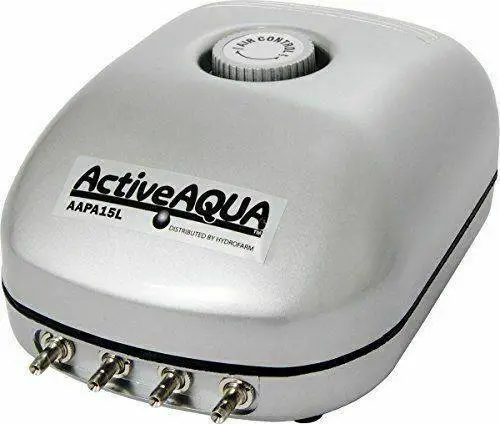
This is a lightweight hydroponic air pump. It is the best value among its competitors, capable of producing 240 gallons per hour. It is suitable for small hydroponic systems.
Size: 4.1 x 6 x 9.4 inches
General Hydroponics Air Pump with Dual Diaphragm
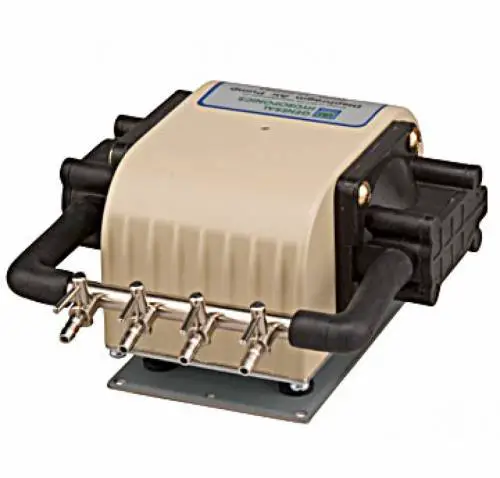
It is a well-built and top pick! This heavy-duty air pump for hydroponic systems is reliable and produces a steady air stream. Its output is 320 GHP with four adjustable valves. It is best to fit systems over ten gals.
Size: 7 X 5 X 6 inches
EcoPlus 793 GPH Commercial Air Pump
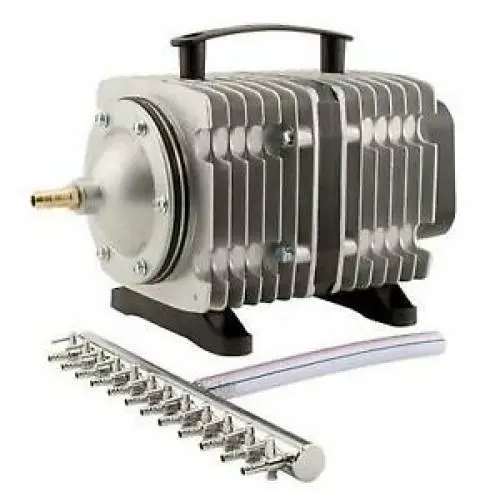
This is a powerful air pump with a flow rate of 793 GHP. It is a bit loud and noisy, but it fits medium to large hydroponic systems for more than 20 gals.
Size: 7.2 x 3.8 x 4.5 inches
It doesn’t matter which pump you purchase if it fits your size requirements. It is a good value for your money.
Cleaning Hydroponic Pump
It is essential to maintain the proper work of your hydroponic pump. You should be periodically responsible for cleaning the pump and its filters.
You may be aware that the submersible pond and fountain pumps are electromagnets. Water can get between the main body and the impeller shaft, acting as a lubricant.
There are three main components in the hydroponic pump structure:
- Flow restrictor
- The impeller
- Shaft
- The main body
Cleaning them when separated with a regular sponge and dish soap is easy.
There is a possibility, however, that your pump comes without a filter.
But you don’t need to worry even in that case because you can easily create a filter from some everyday things in a few steps.
First, you need to take the water inlet cover off. For a few bucks, you can easily buy a furnace filter that will get the job done, and it can be found in almost every hardware store in your area.
Then, just cut the white screening that you can use as a filter screen and cut a piece that will fit snuggle inside the water inlet cover.
Place the cover back, and you are ready!